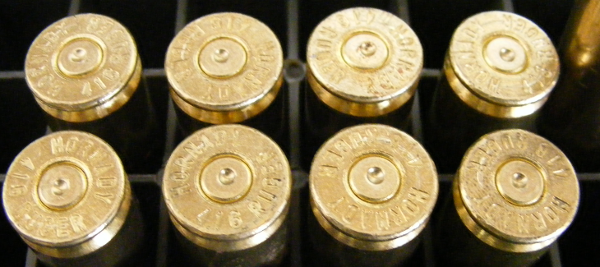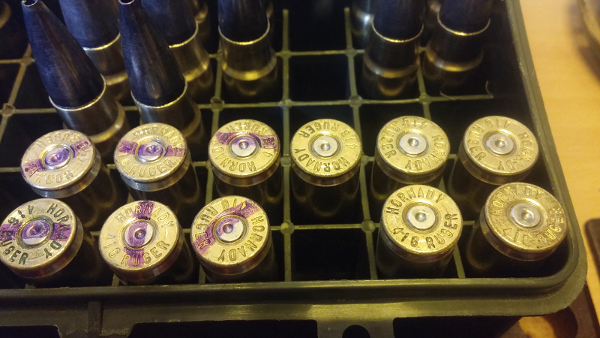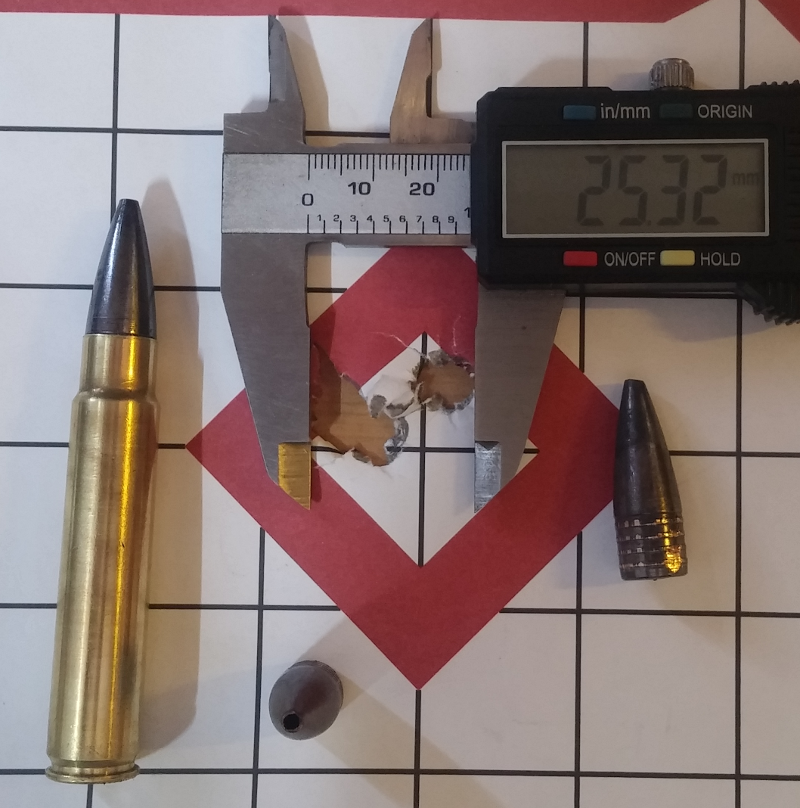Ysterhout Dot Net


These are the primers from the rounds tested. None show signs of excess pressure. All cases extracted easily. One PMP Large Rifle Magnum primer was a dud, and not the first time in PMP. Since then, the preferred primers are Federal 215.
All rounds were crimped to a 1/8 turn worth of crimp applied with a Hornady seating die. Attempting to increase the crimp buckles the shoulder of the case.
Do not use any of these reloads in your 416 Ruger magazine if they are not crimped, the recoil against the inside of the magazine will knock the bullet back into the case.
It's clear that bullet shape is very important for the chamber of this rifle. This exercise has shown what bullet shapes work, which ones give problems, and why.
The twenty inch barrel on the rifle is not a velocity handicap.
Acceptable velocity was obtained with medium-slow extruded powders [ S335 and S355 ]. S355 is the ideal test powder for first loads in this caliber. Take any bullet, estimate the remaining case volume with the bullet seated, then fill the case to 95% of the remaining volume and you have a good idea of what is achievable at a minimum.
Faster burning powders were not considered, because maximum velocity was not the goal. There is no practical advantage to increasing the speed of a 350 grain monolithic from 2300 fps to 2500 fps. The difference in bullet drop at the ranges this caliber is used for, without a scope, is irrelevant.
The range of monolithics available makes the 416 Ruger a bit more versatile when hand-loaded. It is possible load to relatively heavy bullets at lower velocities for close range hunting in thick cover, and lighter bullets to higher velocities for confident shots on larger antelope out to 200 meters, and beyond - for more skilled marksmen.
Accuracy with S355 powder and 245 GS-Custom was astonishing. Astonishing because this is supposed to be a close range big game rifle, and even more astonishing because I am not an accomplished rifle shooter by any means.
This group size works out to 0.58 inches at 100 meters.
After mounting the scope with the Ruger rings supplied with the rifle, and dialing the scope back down to it's 0-0, the two sighting shots at 40 meters were close enough to the point of aim to sight on the 100 meter target. The first two shots on the 100 meter target printed six inches high and three inches left in overlapping holes. Adjusting for six down and three right, everything was literally spot on.

All with locally manufactured components, except for the brass.



